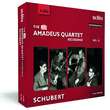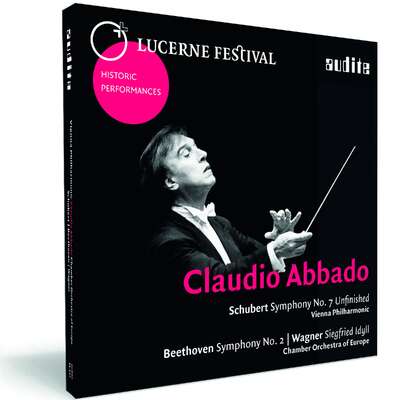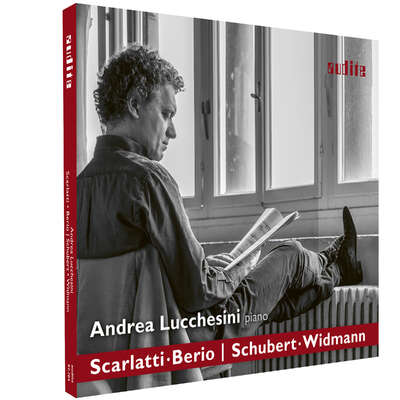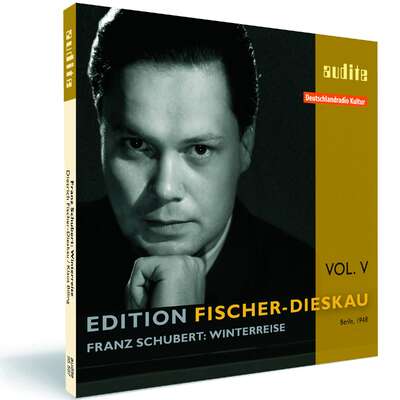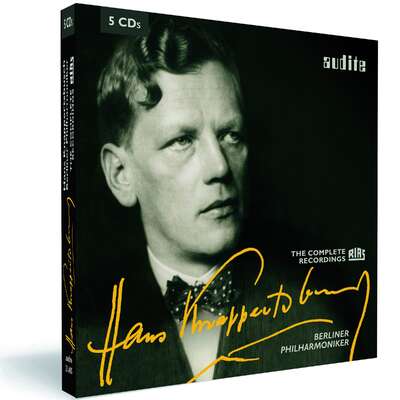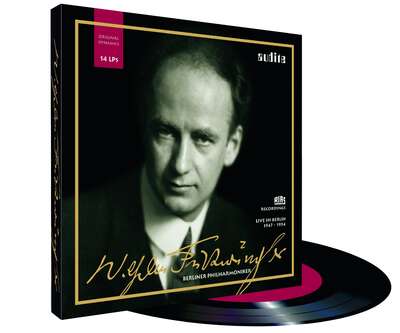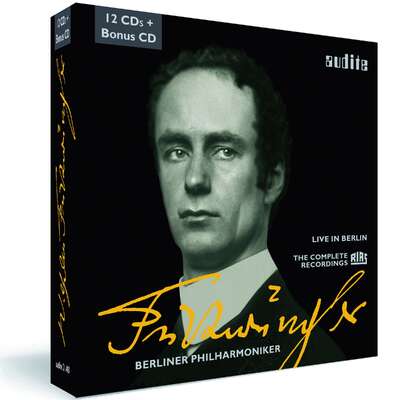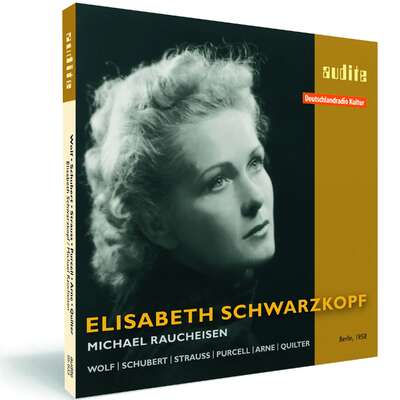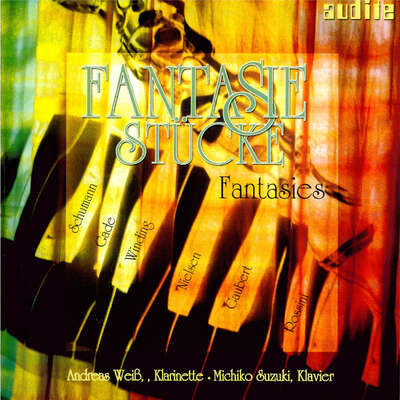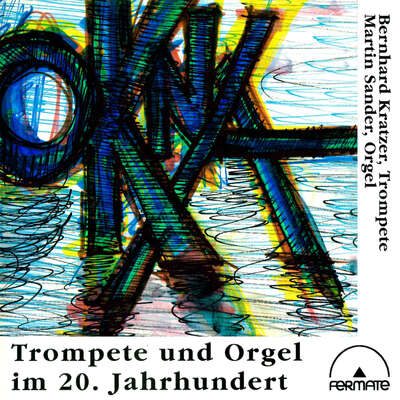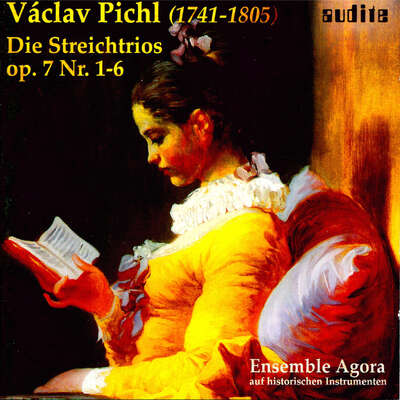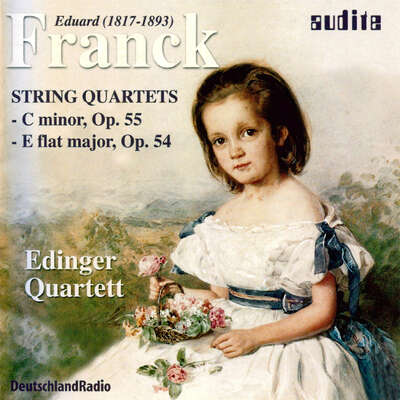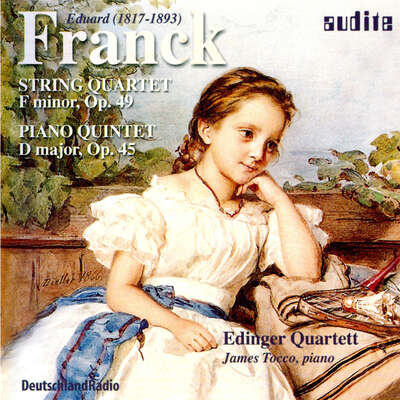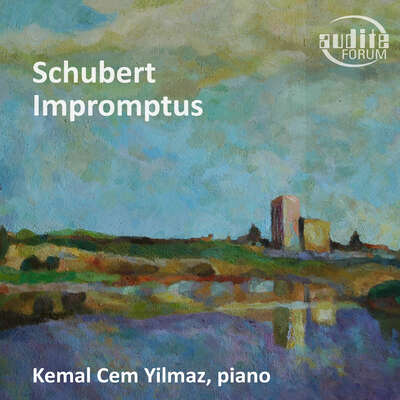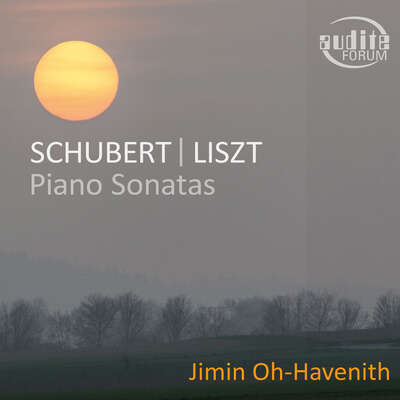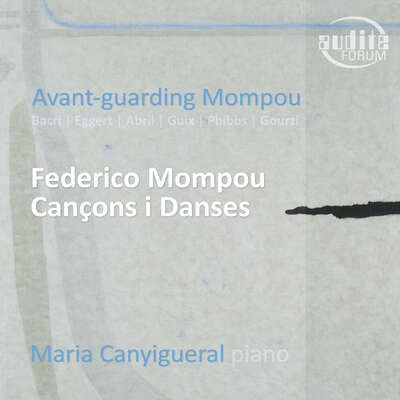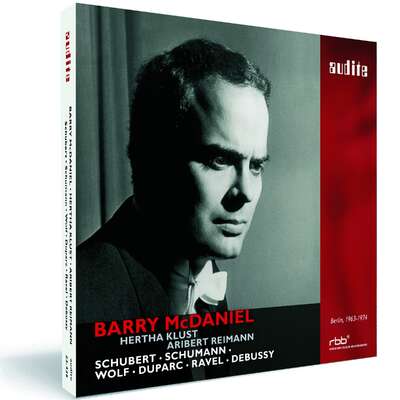
Schubert’s works remained close to the heart of the Amadeus Quartet throughout its entire life. The quartet’s approach to his youthful works was reserved and timid, whilst the great quartets of his maturity were played passionately and dramatically; in the G major Quartet, the contrasts were given special emphasis.more
"Certainly, no listener will remain unaffected by these fascinating performances. The Amadeus Quartet combines quivering drama, high emotionality, joy of life and refreshing lyricism in order to show the bright and the dark sides of Schubert’s music." (Pizzicato)
Track List
Details
|
The RIAS Amadeus Quartet Schubert Recordings
The RIAS Amadeus Quartet Recordings, Vol. II |
|
| article number: | 21.428 |
|---|---|
| EAN barcode: | 4022143214287 |
| price group: | BCA |
| release date: | 23. November 2013 |
| total time: | 153 min. |
Bonus Material
-
Producer's Comment
First-hand impressions of producer Ludger Böckenhoff [German]
- documentation sheet Schubert String Quartets Nos. 14+15
Informationen
Following the release of Beethoven String Quartets with the Amadeus Quartett, audite now presents the second volume in this recording series featuring works by Franz Schubert. Alongside classical composers led by Haydn, Mozart and Beethoven, from the outset the music of Franz Schubert formed a pillar of the Amadeus Quartet's repertoire. Not only did the musicians devote themselves to the three great quartets - the Rosamunde, Death and the Maiden and the String Quartet in G major - but they also played some of the early quartets on a regular basis.
The trademarks of the world-famous string quartet were a beautiful sound and technical perfection; in 1975 the famous German critic Joachim Kaiser confirmed that the Amadeus Quartet was „still the best string quartet in the world". The ensemble's fame had evolved, alongside many concerts and world-wide tours, thanks to its numerous recordings on disc. Less well-known, however, is the fact that the Amadeus Quartet also made many radio recordings. For nearly twenty years, from 1950 until 1969, the Amadeus Quartet regularly travelled to the Berlin RIAS studios. Here, a whole host of recordings was made, reflecting not only the quartet's core repertoire, but also novelties - works that had previously not been performed by the Amadeus Quartet. In the audite series The RIAS Amadeus Quartet Recordings, the majority of these recordings are released in six thematically assembled boxed CD sets.
The Amadeus Quartet finds a particular quality for each of the quartets and thus does justice to the requirements and the content of the music. The early quartets are not overloaded with a "big sound", but are played with a light and lean timbre. For the Rosamunde Quartet, the ensemble presents an interpretation characterised by an inner calm and, at the same time, a piercing intensity. Death and the Maiden reveals precise preparation resulting in a homogenous balance. The underlying sense of drama of the G major String Quartet, Schubert's final quartet, is emphasised by great contrasts. The very early radio recordings of 1950 and 1951 in particular are characterised by impetuous turbulence and youthful exuberance, which are transformed in the later recordings into classical balance, perfection and a beautiful tone.
These radio recordings made by the Amadeus Quartet add to, and widen, the view of the astonishing and successful history of this ensemble.
This release is furnished with a "producer's comment" by producer Ludger Böckenhoff.
Reviews
Diapason | N° 626 Juillet - Août 2014 | Nicolas Derny | July 1, 2014
En 1951, le Quatuor Amadeus, fondé quatre ans plus tôt, grave son premier disque. Au programme: l'ultime Sol majeur de Schubert. On en découvre iciMehr lesen
Le premier volume de la série Audite remportait un Diapason d'or haut la main (Beethoven, cf. n° 618). Pourquoi en priver celui-ci, où l'archet de Norbert Brainin nous tient par la magnificence de son chant (écoutez «Rosamunde»)? A cause de quelques passages pas suffisamment dégrossis, et parce que, malgré ses beautés, cette «Jeune Fille et la mort» de 1954, présentée dans la notice comme le sommet de cette édition, ne supplante ni n'égale les deux versions ultérieures – celle de 1959 nous ébranle tout autrement. Pas besoin cependant de cotiser au fan-club des Amadeus pour noter l'importance de ces documents: l'émotion est la plupart du temps au rendez-vous. Les schubertiens débutants commenceront donc par consulter le catalogue du label à l'étiquette jaune. Les autres «approfondiront» avec cet excellent addendum à une discographie inestimable.
www.musicweb-international.com | 08.04.2014 | Jonathan Woolf | April 8, 2014
The second tranche of RIAS recordings of the Amadeus Quartet concentrates on another composer most dear to the group’s collective heart, Schubert.Mehr lesen
As in that Beethoven set we are confronted by an infusion of a parallel discography, an appendix of broadcast material to the main body of the quartet’s studio, commercial discography. And it has to be said that there are very few striking deviations from expected expressive norms in these five quartets. Tempi are often very similar, and the music’s development is largely a mirror of the studio performances, so that when there is a deviation it seems like a vast anomaly. I can really only cite the slow movement of D.87 which the Amadeus play for RIAS in a much slower and more prayerful way than in their later studio inscription. The RIAS way has just a hint of hymnal piety about it. Otherwise the quartet performance has sufficient charm in the outer movements and burst of vigour in the Scherzo. The 1956 Rosamunde is very similar indeed to the 1951 studio recording and maybe it’s only in the bringing out of the inner voicings that you can tell that the adrenalin of a live performance generates slightly more heat – that ability to balance the quartet so well is also a RIAS technical matter, of course. Throughout, the balance and sound is extremely fine.
The only salient difference between the RIAS and studio Death of the Maiden concerns the finale, which is taken slower in Berlin than in the commercial LP. It makes little real difference as the performance itself convinces however they take it; there is a rich, ripe tone from top to bottom and the interpretation is searching and wholly convincing on its own terms. The broadest performance is that of D.887 but, again, speeds never drag and there is a wholly communicative interplay at work and a very special sound world that the foursome captures. It elevates these performances, and their studio confreres, to the status of being amongst the finest Schubert quartet performances of the 1950s.
If you have the group’s studio inscriptions you will not find that there is any real interpretative divergence from these RIAS broadcasts. They are too close in time, and the group’s tonal qualities remain consonant. Broadcast material from a decade later would have shown lengthening shadows, but here the quartet is near its peak. As I said, the recording quality and subsequent re-mastering is first-class, as are the booklet notes.
Fono Forum | April 2014 | Marcus Stäbler | April 1, 2014 Aufwühlend
Nach der sieben CDs umfassenden Beethooven-Box vom vergangenen Sommer hat das Label Audite nun die zweite Folge seiner Edition mit dem Amadeus QuartetMehr lesen
Die früheste Einspielung ist - wie schon bei Beethoven - zugleich auch die wildeste. In der Interpretation des großen G-Dur-Quartetts aus dem Jahr 1950 lassen die damals noch sehr jungen Streicher die Kontraste schroff aufeinanderprallen. Sie bohren die steilen Crescendi im ersten Satz wie Schmerzensstachel ins Fleisch der Musik; im rasanten Finale stürmen sie mitunter beinahe atemlos voran.
Gegen diese aufwühlende Darbietung wirken die anderen Aufnahmen etwas blasser. Im Quartett "Der Tod und das Mädchen" - im Booklet-Text als Höhepunkt der Edition gelobt - bleiben etwa die Steigerungen im Kopfsatz vergleichsweise brav, ebenso wie manche Passagen im Andante. Das Scherzo bewegt sich einen Tick zu schwerfällig, bevor erst im Schlusssatz wieder jenes jugendliche Feuer lodert, das den besonderen Reiz der frühen Amadeus-Interpretationen ausmacht.
Neben dem Temperament und der überschäumenden Virtuosität beeindruckt das Ensemble durch seinen warmen Klang und eine dichte Legato-Kultur. Wie schön der Primarius Nobert Brainin auf seinem Instrument singen konnte, zeigt er etwa zu Beginn des "Rosamunde"-Quartetts. Dass er den Klang mitunter recht deutlich dominiert und nicht alle Kollegen so stringent phrasieren wie er, gehört zu den Schwachpunkten der Rundfunkproduktionen, die unser Bild vom Amadeus Quartet gleichwohl sehr schön ergänzen.
Record Geijutsu | April 2014 | April 1, 2014
japanische Rezension siehe PDFMehr lesen
kirchmusik.de | 12.03.2014 | Rainer Goede | March 12, 2014
Das Wiederhören des Amadeus-Quartetts weckt Erinnerungen an eine ganz große Zeit der Quartettkultur, die bis heute nichts von ihrem Faszinosum verloren hat.Mehr lesen
Classical Recordings Quarterly | Spring 2014 | Norbert Hornig | March 1, 2014
Last June Audite celebrated ist fortieth birthday. Based in Detmold, Germany, this label has built up a remarkable catalogue of carefully remasteredMehr lesen
String Quartet enthusiasts will be interested in Audite’s Volume 2 of RIAS’ recordings of the Amadeus Quartet. The new two-disc set is dedicated to Schubert, the Quartets No. 9 , 10 and 13-15, all recorded at the Siemensvilla in Berlin between 1950 and 1964. Schubert was always at the centre of the Amadeus’s repertoire, and its performances of this composer set a standard for others in those days (two discs; Φ 21.428). Piano enthusiasts will seck a two-disc set profiling the American pianist Julius Katchen. Katchen, who died in 1969 at the early age of 42, was especially known as an interpreter of Brahms and Liszt. These recordings were taped in two sessions in Berlin in 1962 and 1964. They are of special interest because some of the works played are new to the pianist’s discography – Beethoven’s 32 Variations in C minor, WoO80, Chopin’s Ballade, Op. 47, the Nocturenes Op. 9 No. 1 and Op. 27 No. 2 and Berceuse, Op. 57 as well as the Liszt Sonata in B minor, works in which Katchen demonstrates his qualities as a sensitive poet and virtuoso par excellence (two discs; Φ 21.419). […]
Audiophile Audition | February 15, 2014 | Gary Lemco | February 15, 2014
The Amadeus inject into the slinky 6/8 meter a sudden urgency or impetuosity that jars us into complete attention. If Beethoven had provided the model in his E Minor Quartet, Schubert has taken his own path, a tumultuous and often blistering course, as the Amadeus realization insists most forcefully.Mehr lesen
www.pizzicato.lu | 11/02/2014 | Guy Engels | February 11, 2014 Von menschlicher Seele
Hinter jedem Lachen steckt auch eine Träne – diese Dualität ist besonders charakteristisch für die Musik von Franz Schubert. Auf eine heitereMehr lesen
Man bleibt nicht unberührt, nicht gleichgültig bei diesen packenden, fesselnden Interpretationen mit ihrer Vielschichtigkeit in der Dramaturgie und in den Klangfarben. Jeder noch so kleine Notenwert, jedes Rubato, jede Pause sind deutlich hörbar Teil meisterlicher musikalischer Inszenierungen. Erschütternde Dramatik, aufwühlende Emotionalität einerseits, unbeschwerte Lebensfreude und erfrischende Lyrik andererseits: Die Amadeus-Musiker führen beide Extreme fast unmerklich immer wieder zu einer Einheit zusammen, denn die Licht- und die Schattenseiten, sie sind letztendlich der Mensch.
Certainly, no listener will remain unaffected by these fascinating performances. The Amadeus Quartet combines quivering drama, high emotionality, joy of life and refreshing lyricism in order to show the bright and the dark sides of Schubert’s music.
The Strad | February 2014 | Robin Stowell | February 1, 2014
Audite’s series of the Amadeus Quartet’s radio archive recordings forMehr lesen
Musica | numero 253 - Febbraio 2014 | Piero Rattalino | February 1, 2014
Nel booklet si trova un bellissimo saggio di Rüdiger Albrecht, in tedesco e in inglese, che parla sì dei Quartetti ma anche – evviva! – della loro interpretazione da parte del Quartetto Amadeus, fornendo all’ascoltatore una guida preziosa.Mehr lesen
ensuite Kulturmagazin | Nr. 134 | Februar 2014 | Francois Lilienfeld | February 1, 2014 Amadeus-Quartett in Berlin
Als drei nach dem «Anschluß» 1938 aus Wien geflüchtete jüdische Geiger sich 1940 in einem Internierungslager auf der Isle of Man kennenlernten,Mehr lesen
Die drei Geiger wurden Schüler von Max Rostal, der aIs großartiger Interpret und Pädagoge auch in Bern längere Zeit heimisch werden sollte. Durch die Rostal-Schülerin Suzanne Rozsa lernte das Trio den Cellisten Martin Lovett kennen, der später ihr Mann wurde. Schnell reifte der Entschluss, mit ihm ein Quartett zu gründen, mit Norbert Brainin (Erste Geige), Siegmund Nissel (Zweite Geige) und Peter Schidlof (Bratsche). Der erste Auftritt fand im Sommer 1947 in der Grafschaft Devon statt, der erste Triumph in der Londoner Wigmore Hall im Januar 1948. Bis zum Tode des Bratschisten im Jahre 1987 blieb das Ensemble zusammen.
Lebendigkeit, Enthusiasmus, eine Expressivität, welche die in der Musik enthaltenen Emotionen bis zur Grenze ausbrechen ließ, all dies sind Ingredienzen, die das Amadeus-Quartett weltweit berühmt machten. Unzählige Tourneen und Schallplatten prägten die Karriere dieses außergewöhnlichen Kleeblattes.
Es besteht kein Zweifel darüber, dass der Primgeiger Norbert Brainin musikalisch das Ruder führte. Die drei anderen Musiker akzeptierten dies, und so entstand eine klangliche und interpretatorische Einheit, die, verbunden mit der Spontaneität der Ausführung, zur Unterschrift des Ensembles wurde.
In der Zeit von 1950 bis 1967 war das Amadeus-Quartett häufig Gast in den Studios des RIAS in Berlin. audite ist nun dabei, die dort entstandenen Aufnahmen auf CD zu veröffentlichen, wie immer in hervorragender Qualität, direkt ab den originalen Tonbändern. Die ersten zwei Sammlungen, Beethoven und Schubert gewidmet, sind bereits im Handel. Vorgesehen sind weitere vier Publikationen (Mozart, Zeitgenössisches, Haydn, Romantik).
Nun hat das Amadeus-Quartett einen Riesenteil des Repertoires für die Deutsche Grammophon aufgenommen, teilweise in mehreren Versionen. Namentlich ihr Beethoven-Zyklus, 1959-1963 in Stereo eingespielt, hat Kultstatus. Ist also diese zusätzliche Wiederveröffentlichung nötig?
Die Antwort ist ein klares «Ja»: Für Radio-Aufnahmen stand bedeutend weniger Zeit zur Verfügung als in den Schallplattenstudios. Größere Spannung, nervöseres Spielen, ein dem Konzerterlebnis viel näheres Musizieren waren die Folgen. Wenn man sich auch oft auf dem «hohen Seil» bewegt, mit geringen Ausrutschern oder Intonationstrübungen, so werden diese Nachteile vielfach aufgehoben durch eine Intensität, die den Hörer fast vom Stuhl reißt. Vergleiche mit den Studioaufnahmen sind faszinierend, und ich möchte nicht zwischen den zwei Versionen wählen müssen!
Die Beethoven-Sammlung enthält auch das Streichquintett in C-dur, op. 29, mit Cecil Aronowitz an der zweiten Viola. Er war regelmäßiger Partner des Amadeus-Quartetts in der Quintett-Literatur.
Ein besonderer Fall ist das Es-dur Quartett, op. 127, von Beethoven. Merkwürdigerweise wurde dieses Werk, ebenso wie das in der gleichen Tonart stehende «Harfenquartett» op. 74 vom RIAS nicht aufgenommen. Der Sender besitzt aber einen Konzertmitschnitt von op. 127 (1967), der als «Ersatz» verwendet wird. Hier wird mit einer schier unglaublichen Hingabe musiziert, und der langsame Satz wird von Brainin und seinen Kollegen schon als Vorschau auf die Hochromantik gespielt.
Und gerade da ermöglichen uns die Produktionspläne von audite einen höchst interessanten Vergleich: Vor kurzem hat die Firma nämlich die zweite CD in einem geplanten Beethoven-Zyklus des Quartetto di Cremona veröffentlicht. Dieses Ensemble fasst op. 127 ganz anders auf, nicht als einen Blick in die Zukunft, sondern als einen Abschied von der Klassik. Der langsame Satz erhält hier zeitweise fast tänzerischen Charakter!
Man kann gespannt sein, auf die weiteren CDs sowohl der Amadeus- wie der Cremona-Serie.
Scherzo | enero 2014 | Jesús Trujillo Sevilla | January 1, 2014
siehe PDF!Mehr lesen
auditorium | January 2014 | January 1, 2014 The RIAS Amadeus Quartet Recordings Vol.2
koreanische Rezension siehe PDF!Mehr lesen
Gramophone | January 2014 | Philip Clark | January 1, 2014 Amadeus’s early prime
At various stages in their long career the Amadeus Quartet have remained remarkably consistent interpretation-wise, but this doesn't mean that hearingMehr lesen
Die Presse | 12.12.2013 | Wilhelm Sinkovicz | December 12, 2013
Schubert: Amadeus-Quartett
Für Rias Berlin machten die vier Musiker ab 1950 Radioaufnahmen, die nun nach und nach in den Handel kommen
Das Quartett trug von London aus die wienerische Spielkultur in die Welt und wurde zum wohl bedeutendsten Quartett seiner Zeit. Für Rias Berlin machten die vier ab 1950 Radioaufnahmen, die nun nach und nach in den Handel kommen. Auf Beethoven folgt Schubert – in Vollendung musiziert.Mehr lesen
Musica | numero 251 - novembre 2013 | November 1, 2013
Dopo Beethoven, AUDITE presenta ora un doppio CD con le incisioni dedicateMehr lesen
